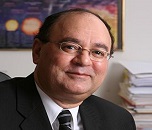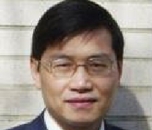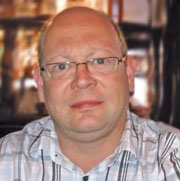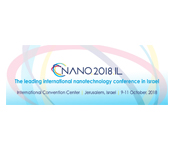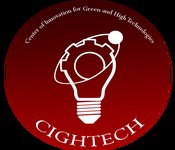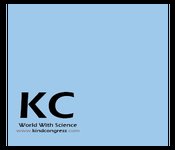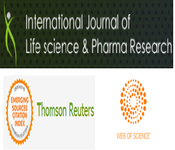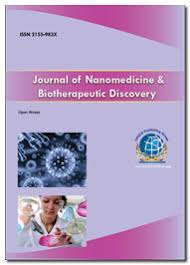Theme: THE ERA OF NANO- Applications of Nano systems and Technology for Smart Innovations
Nanoscience Meet 2018
We welcome every one of the members from everywhere throughout the world to go to “Annual Conference on Nanoscience, Nanotechnology & Advanced Materials" November 26-28, 2018 Bali, Indonesia'. Which incorporates incite keynote introductions, Oral talks, Poster introductions and Exhibitions. While much research and item advancement in an industry is item arranged, it requires researchers with a grip of the establishments of science, innovativeness, the capacity to cooperate and appreciate seeing the viable uses of their work. Nanoscience Meet 2018 covers every one of the parts of related field analysts, the gathering of Scientists, and understudies from all edges of the globe, meet up to examine about Nanoscience and its advances.Every session of the gathering will be incorporated with master addresses, blurb and exchanges, go along with us to plan reasonable improvement forms, developments by which and how these techniques drive new approaches, propels the business and human wellbeing security. We are happy to welcome you in the interest of sorting outboard of trustees to go along with us, where you are the chief for future.
Nanoscience Meet 2018 will also provide the excellent opportunity to meet experts, exchange information, and strengthen the collaboration among Directors, Researchers, Associate Professors, Nanoscience students, deans, researchers and Scholars from both academia and industry. Nanoscience and nanotechnology involve the ability to see and to control individual atoms and molecules. Everything on Earth is made up of atoms—the food we eat, the clothes we wear, the buildings and houses we live in, and our own bodies. But something as small as an atom is impossible to see with the naked eye. In fact, it’s impossible to see with the microscopes typically used in a high school science classes. The microscopes needed to see things at the nanoscale were invented relatively recently—about 30 years ago.
ME Conferences conducts Novel conferences, Symposia and Workshops, concerning current international interest. ME Conferences want to serve the global information community in the development and distribution of high quality, scholarly conferences. It aims to support Global research communities, by empowering clusters of scientists to regularly meet and discuss topics with frontrunners in the field. These conferences cover diverse top-ranked specialities and budding aspects of important and relatively broad subject areas. Organize conferences for knowledge sharing and providing the global platform to explore and learn new researchers in their respective fields
Why to attend???
With individuals from around the globe concentrated on finding out about Nanoscience and Nanotechnology. The Conference unites a portion of the most recent, most provocative research from around the globe. In a little and close setting, scientists and researchers from all edges of the world can trade thoughts, share discoveries and examine future joint efforts. This will deliver a more extensive universal information base and magnificent advances in the field of Nanotechnology. Widely acclaimed speakers, the latest systems, and the freshest updates in Addiction Research and Therapy are signs of this meeting.
Target Audience:
The conference discusses the latest research outcomes and technological advancements in the field and brings together leading, scientists, research scholars, students along with industry professionals to exchange share their views on critical aspects of polymer research. The event is designed in a way to provide an exclusive platform for new researchers, scholars and educators to present and discuss the most recent innovations, trends, and concerns, practical challenges encountered and the solutions adopted in the field of Nanoscience and Nanotechnology.Nanoscience-2018 will comprise leading keynote speakers, session speakers, poster presenters who will be presenting their research on the carbon Nanotubes, graphene, solar cell, graphite, fullerene by using Nano Technology.
- Nanotechnology Researchers
- Academics
- Engineers
- Industrialist Counsellors
- Scholars
- Scientists
- Cancer therapist
- Researchers
- Drug delivery therapist
ME Conferences invites all the members of Nano family, from all over the world to join and share research at the"Annual Conference On Nanoscience, Nanotechnology and Advanced Materials" during 26-28 November 2018 at Bali, Indonesia. Which includes prompt keynote presentations, plenary talks, oral talks, poster presentations and exhibitions.
Theme: “THE ERA OF NANO- Applications of Nanosystems and Technology for Smart Innovations ”
Nano is providing a global platform to discuss and learn about Nano Sciences, Nanotechnology, NanoBiomaterial and Nanomolecular science to exchange their knowledge, experience and research innovations. The aim of Nanoscience and Nanotechnology Conferences is to create a platform for a strong exchange of the recent advancement and technologies towards Nanoworld.
Track 1: Advanced Nanomaterials
The nanomaterial is the basic part of the nanoscience and nanotechnology. The complex functions of nanomaterials in systems require further improvement in the preparation and modification of nanomaterials. Such advanced nanomaterials have attracted a massive interest during recent years and will form the basis for further development in this area. The control of composition, size, shape, and morphology of Nanomaterials and Nanoparticles is a necessary foundation for the development and application of Nanoscale devices in all over the world. These are the critical enablers that allow mankind to exploit the ultimate technological capabilities of magnetic, electronic, mechanical and biological systems. Magnetic Nanodevices, Nano-biosensors, Nanoswitches, Optical Biosensors. Nanodevices will ultimately have an enormous impact on our ability to enhance energy conversion, produce food, control pollution, and improve human health and longevity.
Track 2: Nanomaterial Fabrication Characterization and Tools
Fabrication of nanomaterials consists of nanostructured surfaces, nanoparticles, materials.
Fabrication of nanomaterials is of 2 types.
- Top-down process-In this process nanomaterials are derived from a bulk substrate and obtained by progressive removal of material until desired material is obtained.
- Bottom-up process-Here nanomaterials are extracted from the atomic precursor and gradually collecting it until the desired structure is formed.
The integration of top-down and bottom-up techniques is expected to provide the best combination of tools for nanofabrication at the end. Nanotechnology requires new tools for fabrication and measurement. Level board shows and sun oriented cells are additionally utilizing comparable procedures. Scaling down of different gadgets presents challenges in numerous zones of science and building: material science, science, materials science, software engineering, ultra-exactness building, manufacture procedures, and hardware outline.
Track 3: Nano Sensors and Nanoscale Electronics
Usage of nanotechnology in electronic component is called Nanoelectronics which includes design, construction and applications of electronic circuits and devices on a nanometer scale. Nanoelectronics increases the capabilities of electronic devices such as improvising the display screens on electronics devices by reducing the weight and thickness of the screens and decreasing the consumption of power. Nanosensors carry information about nanoparticles. Many scientific breakthroughs in Nanotechnology has been contributed by Nanosensors. Different type of sensors are built from nanomaterials to detect a range of chemical vapours, to sense bacteria or viruses, to detect single molecules to help pharmaceutical companies in the production of drugs. Latest specialist ventures around 18 in gadgets ventures and 22 in a material are in the procedure, a yearly spending plan of $20,000 million is been supported by Nanotechnology organizations. The applications include in Nano gadgets, Reasonable and renewable vitality, common and mechanical designing, marine and resistance
Track 4: Nanopolymer, Nanotubes and Nanoporous Material
A carbon nanotube is a tube-shaped material which is made of carbon with a diameter measuring on the nanometer scale. These are unique because of the strong bonding between the atoms. Recently the most popular use for carbon nanotubes is in structural reinforcement. Approaches are being made using carbon nanotubes to extract power from sunlight and even as a heat source. Carbon nanotubes are unique in that they are thermally conductive along their length but not across the tube itself. This lets carbon nanotubes play a role on both sides of thermal insulation. Carbon nanotubes are also electrically conductive, which have potential to make an extremely cost-effective replacement for metal wires. The semiconducting properties of nanotubes make them candidates for the next generation of computer chips.
Track 5: Nanogenerators and Piezoelectronics
The nanogenerators have some components inside these whose structures are similar to nanowire made up of a Piezoelectric ceramic material. Piezoelectric materials can generate an electric current just by being bent. In a space less than the width of a human hair hundreds of nanowires can be packed side by side. At this scale and with the combined flexibility of the nanogenerator's components, even the least movement can generate current. Nanogenerators are small in size but increasingly powerful as well as responsive.
Track 6: Nanocatalysis and Application in Chemical Industry
Both in homogeneous and heterogeneous catalysis, the field of nanocatalysis has undergone an explosive growth during the past decade. Since nanoparticles have a large surface-to-volume ratio compared to bulk materials, they are attractive candidates for use as catalysts. The main aim of this research is to produce catalysts with low energy consumption,100 per cent selectivity and long lifetime which includes the use of nanomaterials as catalysts for a variety of catalysis applications. Nanoparticles of semiconductors, metals, oxides and other compounds have been widely used for important chemical reactions.
Track 7: Nano-Based Drug and Gene Delivery
Nanoparticles have a huge potential of delivering drug effectively. Nanosystems with different compositions have been considerably investigated for drug delivery and gene therapy purposes. The interactions of nanomaterials with the biological environment, drug release, multiple drug administration, stability of therapeutic agents and Several anti-cancer drugs including paclitaxel, doxorubicin is much needed. Nanomaterials comprising of peptide-based nanotubes are used to target the vascular endothelial growth factor receptor and cell adhesion molecules like integrins, cadherins and selectins, which is a new approach to control disease progression.
Track 8: Quantum Dots and Nano-Magnetism
Quantum Dots and Magnetic Nanoparticles have lots of applications in analytical methods. Quantum Dots are semiconductor nanoparticles whose electronic energy levels are considerably controlled by the particle dimensions. This control comes about due to quantum confinement.QDs are useful as an analytical tool due to its unique optical properties. These optical properties consist of narrow emission spectra, broad absorbance spectra, emission wavelength which is adjustable by adjusting the size of the particle, high quantum efficiency and low photobleaching rates.MNPs are made of magnetite (Fe3O4) or maghemite (γâ€Fe2O3). These materials are typically superparamagnetic in the nanoscale range. The magnetic properties of these nanomaterials allow them to be manipulated by magnetic fields. the relatively low toxicity of iron oxides allows for their use in vivo applications.
Track 9: Dimensional Metrology of Nanoparticle in Complex Media
The nanometrology growth focuses on issues related to the reliability and the comparability of measurements on nanomaterials. Atomic Force Microscopy (AFM) and Scanning Electron Microscopy (SEM) techniques are used in the metrology laboratories. Nowadays with the development of the SEM equipped with a field emission gun (FEG), where the resolution can achieve 1 nm whatever the accelerating voltage is. The calibration of the instrument allows the operator to make the measurements traceable. The choice of the measurement protocol is essential to achieve an accurate result.A metrological evaluation of each step is required.
Track 10: Internet of Nano Things
When the nanoscale devices connect internally with the existing communication networks then it is known as the Internet of Nano-Things.IoNT is derived from the merged concept of IoT and Nanotechnology which are considered as a new revolution with a huge popularity in the world of modern wireless telecommunications. Nanomachines are the most basic functional unit which is able to perform a simple task like sensing and is integrated by nano-components. Coordination and information sharing among several nanomachines will expand the potential applications of individual devices both in terms of complexity and range of operation. Things such as smartphones, tablets, RFID(Radio Frequency Identification), sensors etc play a major role in interacting with each other to do desired tasks. Internet of NanoThings consists of miniature sensors connected to each other via Nanonetworks to abstract data from objects. Hence Internet of Nano things will open new doors of research in the area of Nano Sensing, Nano Devices and Nano Communication. The Internet of Nano Things (IoNT) concept was proposed by Ian Akyildiz and Josep Jornet in the paper “The Internet of Nano-Things”.Major research challenges are presented by the scientist in terms of channel modelling, information encoding and protocols for nanonetworks and proposed Internet of Nano-Things (IoNT).
Track 11: Nanotech for Energy and Environment
Nanotechnology has a significant role in all corner of the energy and environment sectors. It is helpful in producing an efficient and cost-saving energy which also would be renewable. Energy savings could be made if the proper nanomaterials were used not just for more efficient distribution and power transmission but also to build smart glass and electrochromic windows capable of maximising the use of solar power to heat buildings. Energy storage could be greatly enhanced by optimised batteries and supercapacitors. Some examples are:- Solar cells which generate electricity at a competitive price, Organic chemical pollution in groundwater clean up, Pollution free manufacturing of material, Cleaning volatile organic compound in air and more.
Track 12: Nanomaterial for Clean and Sustainable Energy
Nanotechnology has developed a sustainable energy production scheme which is one of the most important scientific challenges of the 21st century. The challenge is to design, to synthesize and to characterize new functional nanomaterials with controllable sizes, shapes and/or structures. It is now one of the fastest growing research fields in the world and will hopefully head to the development of a renewable energy economy in which fossil fuel resources will only be used to produce more valuable chemicals. This vision is that energy, environmental and security problems created by the consumption of fossil fuels will be solved once and for all.
Track 13: Nanobiotechnology and Nanomedicine
The application of nanotechnology for the prevention and treatment of diseases is known as Nanomedicine which belongs to the branch of medicine. Biocompatible nanoparticles and nanorobots are applicable to diagnosis, delivery and sensing purposes in a living organism. Particles in nanoscale have been used in maximum number to improve the drug accumulation, internalization and therapeutic efficacy. The physicochemical and biological properties of the nanoparticles can also be finely adjusted by tailoring their chemical properties, sizes, shapes, structures, morphologies and surface properties. understanding the issues related to toxicity and environmental impact of nanoscale materials is Current problems for nanomedicine.
The objectives of nanobiotechnology are involved in the application of nanotools to relevant biological problems and Developing new tools such as peptoid nanosheets for medical and biological purposes. The imaging of native biomolecules, biological membranes and tissues is also a major topic for the nanobiology researchers.
Track 14: Nanomaterial for Food Packaging
Due to the range of advanced functional properties nanomaterials are increasingly being used in the food packaging industry. Nanotechnology-enabled food packaging contains improved packaging, active packaging and smart packaging. Few studies have been published regarding the potential interaction of nanomaterial-based food contact materials (FCMs) with food components. The migration of silver and copper from nanocomposites are used for their anti-microbial properties in food packaging. NMs have been primarily used as antimicrobials and improvement of barrier function. Both Of The applications aim to extend the shelf life of packaged food products. By including nanoparticles in a polymer matrix Barrier function improvements are obtained. It slows down the diffusion of gases into the food.NMs may also be used to create intelligent packaging, NMs can alert the consumer to the presence of microbes, chemical contaminants or gases indicating spoilage by smart packing.Nanomaterials( NMs) have been incorporated into polymeric packaging materials such as polyamides (PA), nylons, polyolefins,ethylene-vinyl acetate copolymer, polystyrene(PS), epoxy resins, polyurethane, polyvinyl chloride (PVC) and polyethene terephthalate (PET). Metal and metal oxide NMs (silver, gold, zinc oxide, silica, titanium dioxide, alumina and iron oxides), carbon-based NMs and nano-sized polymers are most commonly used. The migration potential of NMs from food contact materials into food cannot be easily predicted because of its tiny size.
Track 15: Nanotechnology in Tissue and Regeneration
There is a direct communication between the CNS and brain which is established by neural interfaces. In natural interface different kind of biomedical device is implemented in a human body that already have been developed to translate the brain processes into specific actions by the control of external devices. These interfaces develop a neurophysiological understanding and provide a clinical means for treatment of neurological symptoms and diseases. These could help increase the independence of disable people by which they can control various devices with their thoughts – not surprisingly, the other candidate for early adoption of this technology is the Military. Neural Interfaces or brain-machine interfaces (BMIs) can preserve the function of impaired neuronal tissues by translating nervous system signals into quantities that can be computationally understood.
Track 16: Nanotechnology Safety and Risks
Although the Infinite potential of nanotechnology is encouraging the safety risks of nanoparticles have not been fully recognised. The widespread state of nanoparticles is not a threat but it is critical to weigh the opportunities and risks of nanotechnology in products and applications that may affect the environment. As particles are becoming smaller in size, the more reactive they 'll be. As per increased reactivity, the effects of a substance is harmful. Hence nanotechnology can make normally harmless substances assume hazardous characteristics. Nanoparticles’ large relative surface area also enables them to exert a stronger effect on their environment and to react with other substances.
Track 17: Nanotechnology for Water Treatment
Nowadays Water pollution is a global problem for which we need to find a solution. Due to worldwide increased population and changing climate best innovative water technology is required in order to ensure a pollution free global water and supply drinking water. Recently highly advanced nanotechnology offers new opportunities in technological developments for advanced water and wastewater treatment processes. There are two types of nanotechnology membranes that may be effective: nanostructured filters, where either carbon nanotubes or nanocapillary arrays provide the basis for nanofiltration and nonreactive membranes where functionalized nanoparticles aid the filtration process.
Track 18: Characterization and Modelling of Nano Structures and Devices
Modelling techniques and simulation currently play a significant role in characterizing nanocomposite properties and understanding their mechanical behaviour via atomistic modelling, continuum mechanics-based approaches and multiscale modelling techniques. Characterization of nanocomposites is aimed at gaining knowledge on their global response such as the displacement and stress fields at the boundaries of a representative volume element. The continuum mechanics approaches are adequate and sufficient for modelling nanocomposites within this scope. On the other hand, a more advanced approach for simulation of nano-reinforced materials is the multiscale modelling for more elaborate analyses, where the molecular dynamics and continuum mechanics models are integrated into a computing environment. This approach, in turn, can be detailed enough to account for the material physics at nanoscale while efficient enough to handle the field variables of interest at larger length scales. Concentrating on nano-reinforced composite materials and their applications, the main objective of this special issue is to provide a forum for exchanging the state-of-the-art and novel ideas in the field of modelling, characterization and processing of these emerging materials.
Track 19: Mathematical Modelling In Nanoscience and Nanotechnology
The mathematical analysis of any new field is a compelling goal. We will consider three themes which indicate some of the directions that increasing role might take: in bridging time and length scales, in fast algorithms and in optimization and predictability. Its solutions contain significant technical challenges. In a complementary way, mathematics and simulation would be enormously stimulated by the challenges of nanoscale modelling. While some rapidly developing areas of mathematics such as fast multipole and multigrid algorithms are ready to apply in nanoscale modelling.
Related Conference: Nanomedicine Conferences | Nanotechnology Events | Nano Healthcare Congress | Nanomedicine Meet | Nanoscience Event | Nanoengineering Conference | Tissue Engineering Meeting
- Advanced Materials Science Conferences August 27-29, 2018 at Dubai, UAE
- Global Physicians and Healthcare Congress June 25-27, 2018 Dubai, UAE
- 21st Global Nanotechnology Congress October 17-18, 2018 Dubai, UAE
- 27th International Nanomedicine and Nanomaterials Conference October 18-19, 2018 Abu Dhabi, UAE
- International Conference on Internal Medicine May 21-22, 2018 Osaka, Japan
- 7th International Conference on Clinical and Medical Case Reports June 01-02, 2018 Osaka, Japan
- 24th World Congress on Nanomaterials and Nanotechnology July 12-13, 2018 Bangkok, Thailand
- Annual Congress on Nano Technology & Nanomaterials September 10-11, 2018 at Stockholm, Sweden.
- 23rd International Conference on nanomaterial and Nanotechnology-Nanomaterial 2018, March 15-16, 2018 London, UK;
- 20th Asia Pacific Nanotechnology Congress July 23-24, 2018 Sydney, Australia
- 24th World Nano Conference- NANO 2018, May 07-08, 2018 Rome, Italy
- Nanosciences and Nanotechnology Nov 26-28,2018 Barcelona, Spain
- 18th International Conference on Nanotechnology and Expo- Nano Expo 2017, Nov 13-14, 2017 Atlanta, Georgia, USA
- 3rd International Nanotechnology Conference & Expo, May 7-9, 2018 Rome, Italy
- 25th Nano Congress for Future Advancements- Nano Congress 2018, August 16-18, 2018 Dublin, Ireland
- International Conference on Nanotechnology and Nanomaterials, July 16-18, 2018 Madrid, Spain
- Global Summit & Expo on Nanotechnology and Material Science Dec 4th - Dec 6th Dubai (UAE).
- International Microprocesses and Nanotechnology Conference-MNC 2018, November 13-16, 2018 Sapporo, Japan
Related Societies:Swiss Physical Society (SPS), SPIE--The International Society for Optical Engineering, Society for the Advancement of Material and Process Engineering (SAMPE),American Academy of Nanomedicine (AANM),American Association for the Advancement of Science,ASM International ,Canadian NanoBusiness Alliance (CNBA) ,European NanoBusiness Association (ENA),euspen,IEEE Nanotechnology Council,IEEE Nanotechnology Virtual Community,Intellectual Property Owners Association (IPO),ISNSCE,Materials Research Society (MRS),MEMS Industry Group (MIG), MEMSnet,NanoBusiness Alliance,The Nanotechnology Institute of ASME International,Nanometer-scale Science and Technology Division of the American Vacuum Society (NSTD),Asian Nanoscience and Nanotechnology Association (ANNA),International Association of Nanotechnology,European Nanoscience and Nanotechnology Association (ENNA),German Association of Nanotechnology,Graphene Stakeholders Association (USA),Nano Science and Technology Institute (NSTI),Nanotechnology Industries Association,NanoBusiness Commercialization Association,Nano Technology Research Association (NTRA) South Korea,International Association of Nanotechnology (IANT), Nanotechnology Industries Association (NIA) (UK), Russian Society of Scanning Probe Microscopy and Nanotechnology,American Bar Association Section Nanotechnology Project (USA), American Chemical Society - Nanotechnology Safety Resources (USA), American Society for Precision Engineering (ASPE) (USA), Converging Technologies Bar Association (USA), European Society for Molecular Imaging (ESMI) (USA), European Society for Precision Engineering and Nanotechnology EUSPEN (UK),Biological Applications of Nanotechnology at University of Idaho USA, Birck Nanotechnology Center at Purdue University USA,California Institute of Nanotechnology USA,California Nanosystems Institute at University of California USA,Los Angeles and University of California USA, Santa Barbara, Center for Biological and Environmental Nanotechnology at Rice University USA,Center for Hierarchical Manufacturing at University of Massachusetts Amherst USA,Center for Integrative Nanotechnology Sciences at University of Arkansas at Little Rock USA,Center for Nanostructure Characterization and Fabrication at the Georgia Institute of Technology, USA
Summary:
Nanotechnology refers to a wide range of technologies conducted on functional systems at the nanometer scale. It can be said that nanotechnology is the ability that can be projected to construct items either using the bottom-up approach or using the top-down approach, whereby top-down nanotechnology is considered to be the most well-established form of nanotechnology. The global nanotechnology market should reach $90.5 billion by 2021 from $39.2 billion in 2016 at a compound annual growth rate (CAGR) of 18.2%, from 2016 to 2021. Thus, there lies a great opportunity for industry participants to tap the fast-growing market, which would garner huge revenue on the back of commercialization of the technology.
Nano Science Meet 2018 welcomes attendees, presenters & exhibitors from all over the world to Bali, Indonesia. The organizing committee is gearing up for an exciting and informative conference program this year also which includes plenary lectures, symposia, workshops on a variety of topics, poster presentations and various programs for participants from all over the world. We are delighted to invite you all to join & register for the international conference on “ Nanoscience, Nanotechnology & Advanced Materials" which is going to be organized during November 26-28 in Bali, Indonesia.
Scope Of The Conference:
The nanotechnology market can be segmented by type, application, end-user and geography exclusively. The market is categorized into various categories such as nanocomposites, nanofibers, nanoceramics, nanomagnetics and more based on the types of nanotechnology commercially available. Every single type of nanotechnology differs greatly and the composition is different with different technical specifications. As of 2018, so much progress has been made in nanotech research and development that commercialization is accelerating broadly. One factor which boosts the adoption of nanotechnology increases in the manufacture and availability of carbon nanotubes, a basic nanomaterial that can be used in a wide variety of manufactured goods. These nanotubes have been shown to have highly valuable qualities, including incredible strength, extremely lightweight and high conductivity of electricity. As nanotube supplies increase and costs drop, use will increase significantly. (Prices have fallen from hundreds of dollars per gram in the late 1990s to only a few dollars per gram today—depending on the exact specifications of the nanotube). Investment in nanotechnology research and the market for nanotech products have expanded steadily.
WHY INDONESIA:
It is the 3rd most populated country in Asia and 4th in the world with 250 million population growth. Land area is of 1,919,440 km square with 17,508 islands. Here the Natural resources are minerals and a wide variety of flora and fauna (biodiversity) which are the Potential raw materials for Nano product. Thus, nanotechnology development must be directed to manage and add Indonesian natural resources value significantly for fulfilling all domestic needs while competing for the global product to increase national competitiveness. Nanotechnology development in Indonesia is getting more active, where many institutions from several ministries have been involved seriously.
Bali is a part of these islands in Indonesia. It is also a popular tourist destination, which has seen a significant rise in tourists since the 1980s. It is renowned for its highly developed arts, including traditional and modern dance, sculpture, painting, leather, metalworking and music. The island is surrounded by coral reefs. Beaches in the south tend to have white sand while those in the north and west have black sand.
There are a large number of institutes and associations in Indonesia dealing with the researchers on Nanotechnology and advanced material which might be more beneficial for conducting the conference in Indonesia due to its supportive environment and positive vibes.
TARGETED AUDIENCE:
- Nanotechnology Scientists/Research Professionals
- Physicists/Chemists
- Junior/Senior research fellows of Nanotechnology/ Materials Science/ Polymer Science
- Biotechnology
- Nanotechnology/ Materials Science Students
- Directors of Nanotechnology companies
- Nanotechnology Engineers
- Members of different Nanotechnology/Materials science associations
List Of Famous University In The World
- SUNY Polytechnic Institute
- Cornel University
- University of Michigan
- Rice University
- University of Virginia
- The University of North Carolina at Chapel Hill (UNC)
- Purdue University
List of the university in Indonesia
- Mochtar Riady Institute for Nanotechnology
- IiNUSAT-1: The 1st Indonesian inter-university nano-satellite for research and education
- Zainuddin Ahmad, Malaysian University of Science and Technology
- Bambang Ariwahjoedi, Institut Teknologi, Indonesia
- Voravee P. Hoven, Chulalongkorn University, Thailand
- Cattleya Petchsing, Thammasat University, Thailand
- Sujitra Wongkasemjit, Chulalongkorn University, Thailand
- Nurual Taufiqu Rochman and Masbah R.T. Siregar, Indonesian Institute of Sciences
List of research Institutes:
- Institute Teknologi Bandung (ITB)
- Indonesian Institute of Sciences
- Pusat Riset Pengembangan Institusi Nano Teknologi dan Graphene (PRINT-G), DRPMI, Universitas Padjadjaran
List of the company :
- Nano Center Indonesia
- Nanotech Inovasi Indonesia (NANOVASI) Company
- Nanotech, Indonesia
- Nano store, Indonesia
- Indigomo
A glance at market value:
The Global Nanotechnology Market is poised to grow at a CAGR of around 18.1% over the next decade to reach approximately $173.95 billion by 2025. This industry report analyzes the global markets for Nanotechnology across all the given segments on global as well as regional levels presented in the research scope. The study focuses on market trends, leading players, supply chain trends, technological innovations, key developments, and future strategies. With comprehensive market assessment across the major geographies such as North America, Europe, Asia Pacific, Middle East, Latin America and Rest of the world the report is a valuable asset for the existing players, new entrants and the future investors.
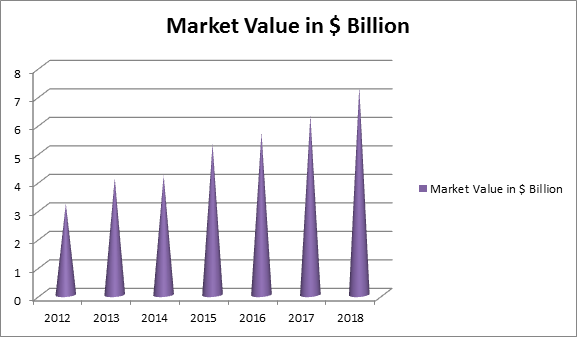
A recent research study, "Nanotechnology Market Outlook 2017", RNCOS' analysts have identified that the global nanotechnology industry has been growing at a rapid pace with rising applications in sectors like electronics, energy, healthcare sector etc. In addition, market trends like nanotechnology-based thin film solar cells with high efficiency; nanomaterials with higher strength; robust growth in nanofibers and nanomedicine market; etc., are booming growth in this industry.
|
Product |
Global market |
Compound annual growth rate |
Year |
|
|
Million |
Year |
|||
|
Quantum dots |
$610.0 |
2016 |
41.3% |
2016-2021 |
|
Nanofibers |
$276.0 |
2014 |
38.6% |
2015-2021 |
|
Carbon nanotubes |
$158.6 |
2014 |
33.4% |
2014-2019 |
|
Nanofilteration membrane |
$215.5 |
2014 |
15.6% |
2014-2019 |
|
Nanocomposites |
$225.0 |
2014 |
21.1% |
2014-2019
|
The U.S. consumed more than $3.1 billion worth of advanced and nanoscale ceramic powders in 2010. Consumption is projected to increase to nearly $3.4 billion in 2011 and $5.4 billion in 2016, a projected compound annual growth rate (CAGR) of 9.9% between 2011 and 2016. Molecular Diagnostics market is likely to grow at healthy CAGR between 2016 and 2021.
Global carbon nanotubes (CNT) market is anticipated to witness growth due to growing application scope of nanomaterials in electronics, plastics and energy storage applications.CNT is majorly used as composite fibre in polymers for improving thermal, electrical and mechanical properties of bulk products. Growing polymer production on account of increasing application scope in construction and automotive industries in emerging economies including China, India, Brazil and the Middle East is anticipated to augment carbon nanotubes market over the forecast period.
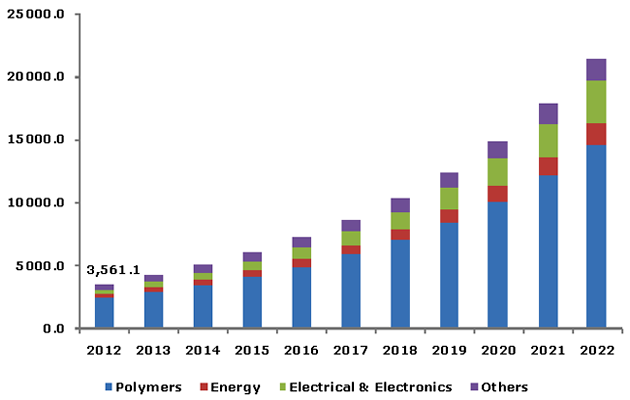
The factors such as advancement in technology, increasing government support and private sector funding for R&D, growing demand for miniaturization of devices, and strategic alliances between countries are expected to drive the global nanotechnology market growth. However, the issues such as environmental, health, and safety risks, and concerns relating to nanotechnology commercialization are expected to hamper market growth.
Conference Highlights
- Advanced Nanomaterials
- Nanomaterials Fabrication,Characterization and Tools
- Nanosensors and Nanoscale Electronics
- Nanopolymers,Nanotubes and Nanoporous Materials
- Nano-generators and piezoelectronics
- Nanocatalysis and Application in Chemical industry
- Nano-based Drug and Gene Delivery
- Quantum Dots and Nanomagnetism
- Dimensional metrology of Nanoparticles (NP) in complex media
- Internet of Nano-things(IoNT)
- Nanotech for Energy and Environment
- Nanomaterials for Clean and Sustainable Technology
- Nanobiotechnology and Nanobiomedicine
- Nanomaterials for Food Packaging
- Nanotechnology in Tissue and Neuron Regeneration
- Nanotechnology Safety and Risks
- Nanotechnology for Water Treatment
- Characterization and Modelling of Nano Structures and Devices
- Mathematical Modelling in Nanoscience and Nanotechnology
To share your views and research, please click here to register for the Conference.
To Collaborate Scientific Professionals around the World
| Conference Date | November 26-27, 2018 | ||
| Sponsors & Exhibitors |
|
||
| Speaker Opportunity Closed | Day 1 | Day 2 | |
| Poster Opportunity Closed | Click Here to View | ||
Useful Links
Special Issues
All accepted abstracts will be published in respective Our International Journals.
- Journal of Nanomedicine & Nanotechnology
- Journal of Nanomaterials & Molecular Nanotechnology
- Journal of Nanomedicine & Biotherapeutic Discovery
Abstracts will be provided with Digital Object Identifier by






















